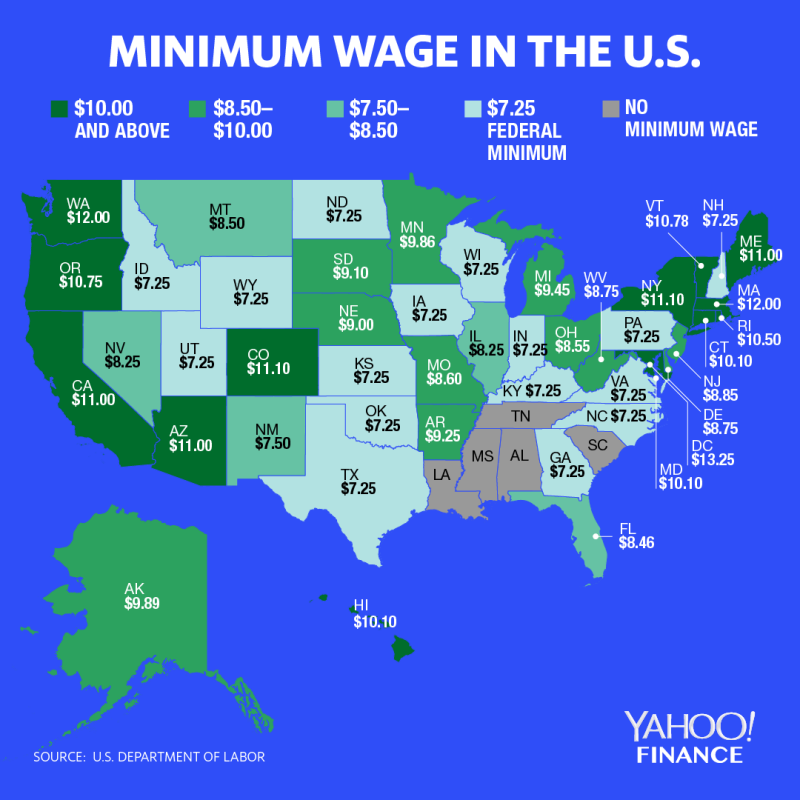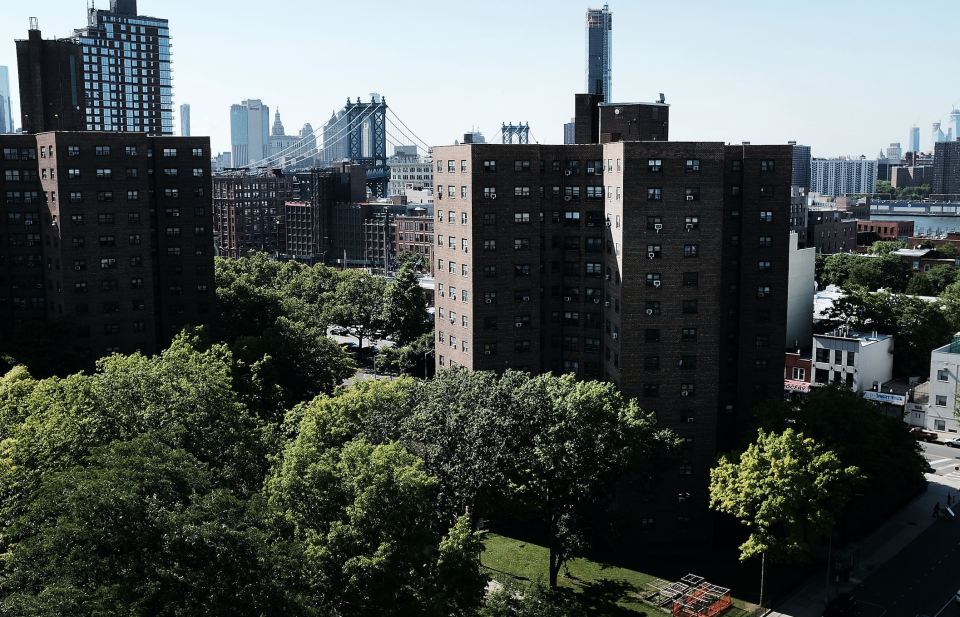'A national problem': U.S. housing affordability is out of whack with minimum wage
Rent affordability and minimum wage are two issues that have been brought to the forefront in recent years. A new report from the National Low Income Housing Coalition (NLIHC) highlights how the two are intrinsically tied.
According the NLIHC’s 2019 Out of Reach Report, “in only 10% of U.S. counties can a full-time worker earning the average renter’s wage afford a modest two-bedroom rental home at fair market rent, working a standard 40-hour work week. The same worker could afford a modest one-bedroom apartment in 41% of U.S. counties.”

Andrew Aurand, vice president for research at the NLIHC and co-author of the report, said the findings were “consistent” with what he and the other researchers already knew.
“This affordability problem for rental housing for low-wage workers is really a national problem,” Aurand told Yahoo Finance. “Obviously, the cost of rental housing differs in different areas of the country, but what we find is places that appears to be more affordable also tend to be places where wages are lower. So there’s still a gap between what the lowest-wage workers earn and what the lowest-income families have as income and their rental housing costs.”
A minimum wage problem or rent affordability problem? Or both?
According to the NLIHC report, $22.96 is the 2019 national housing wage for “a modest two-bedroom rental home” and $18.65 is the baseline for a one-bedroom. Based on the $7.25 federal minimum wage, someone earning that amount would need to work 103 hours per week to afford a one-bedroom or 127 hours per week for a two-bedroom.
In the Boston-Cambridge-Quincy HMFA (HUD Metro Fair Market Rent Area), the most expensive metropolitan area in the U.S., a renter must earn $42.19 an hour in order to afford a two-bedroom apartment. In the Huntington-Ashland HMFA of West Virginia, the cheapest metropolitan area, it costs only $14.12.

So, do these findings call for a raise to the federal minimum wage — or does it raise questions about reforms to rent affordability?
“It’s really both. You can’t really probably solve it at this point,” Susan Saegert, a professor of environmental psychology and geography at the CUNY Graduate Center, told Yahoo Finance. “It doesn’t look in lots of places that you can solve it by increasing the minimum wage, although there are many places in the country where that would work and be helpful.”
She acknowledged the fact that a minimum wage hike can create a cycle of sorts, where other prices are raised as a result.
“There’s been a tendency sometimes when incomes go up, rents also go up, so sometimes it’s only a temporary improvement,” Saegert said. “Then, fixing a supply of affordable rentals is something that’s needed because there’s a shortfall and has been for a long time, and the number of people making lower incomes until the last few years has been increasing.”
Aurand agreed that the issue is tied to both minimum wage and rent affordability.
“Yes, raising the minimum wage is important so low-wage workers are better able to afford the necessities,” Aurand said. “But at the same time, the proposals for raising the minimum wage, they don’t reach the level that’s necessary for a full-time worker to really afford their rental housing, so really we need both.”

‘We sort of act like [these people] don’t exist’
The issue extend beyond minimum-wage workers to people who care for children, elderly, and those who are sick or disabled.
The NLIHC report stated that “an average renter must work 52 hours per week to afford a modest two-bedroom apartment of his or her own, a challenging task that is even more difficult for a single parent of a young child or a person with a disability.”
“The whole notion that the society needs to provide a basic standard of living and care for people who aren’t able to care for themselves, it’s really eroded,” she said. “We sort of act like [these people] don’t exist, but there are actually lots of them.”
There are racial disparities among these findings as well — the research found that “a full-time white worker at the 60th percentile of the white-wage distribution can afford a two-bedroom rental home at fair market rent, while a full-time black or Hispanic worker at the 60th percentile of the black-wage or Hispanic-wage distribution cannot afford a one-bedroom rental.”

Saegert highlighted this as well, noting that two aspects of the problem of inequality are racial and income.
“There was an article in the Wall Street Journal about how black homeownership has dropped to its lowest level on record,” she said. “And at the same time, Hispanic homeownership has been increasing. This shows you that it’s an uneven phenomenon, but African Americans have faced and continue to face significantly more discrimination in obtaining housing and more racial segregation, which reduces the supply because it’s just limited to certain places.”
While only 6% of white households are extremely low-income renters, 20% of black households and 16% of Hispanic households are.
“It has really got to be a greater commitment to inequality and reasonable standards of living for all people,” Saegert said. “That would need work — the issues of wages and allowing organizing — so that wages can be bargained for and labor can win some victories there.”

‘We need to put sufficient resources into rental assistance’
The NLIHC has several recommendations for finding a solution to this. It calls for a ban on discriminating against low-income families with housing vouchers and for changes to the tax code. It also states that there needs to be “significant capital investment” to ensure that the affordable housing supply is preserved for low-income renters.
Aurand also shared his suggestions that he thinks should be made federally and locally.
At the national level, “we need to put sufficient resources into rental assistance, meaning vouchers, so low-income renters could use a voucher to find housing and afford it in the private market up to a modest level,” Aurand said. But, “some markets don’t have enough housing, so we also need subsidized housing production for low-income and the lowest-income renters.”
“At the local level, housing developments are very expensive,” Aurand said. “At the same time, there are many communities that don’t allow multi-family housing developments. That zoning and those ordinances are at the local level, so we need localities to review their zoning and asking ‘Do we have our land zoned in a way that we can produce a sufficient amount of housing?’”
Adriana is an associate editor for Yahoo Finance. Follow her on Twitter @adrianambells.
READ MORE:
Wage gap between top employees and everyone else is 'off the chart'
A rise in high-income renters is bad news for the U.S. home sales market
Research details the 'rapid increase in homelessness' in certain U.S. cities
Read the latest financial and business news from Yahoo Finance
Follow Yahoo Finance on Twitter, Facebook, Instagram, Flipboard, SmartNews, LinkedIn, YouTube, and reddit.
